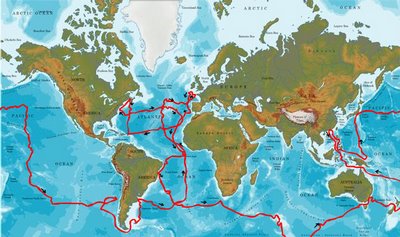
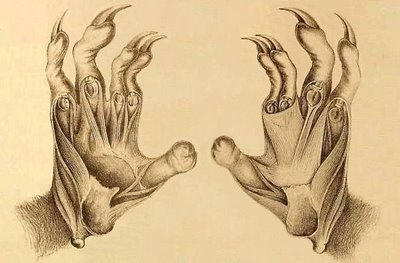 This is an inverted, spliced and 'scrubbed' detail from a plate entitled
This is an inverted, spliced and 'scrubbed' detail from a plate entitled'Phascolarctos cinereus and Didelphys Virginiana', 1882 by Cunningham.
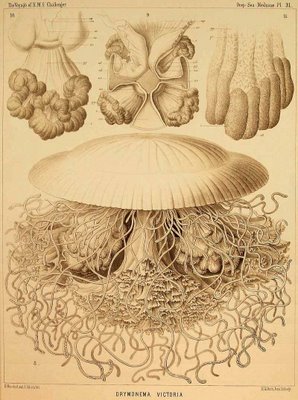
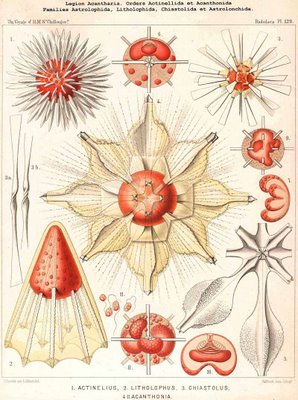
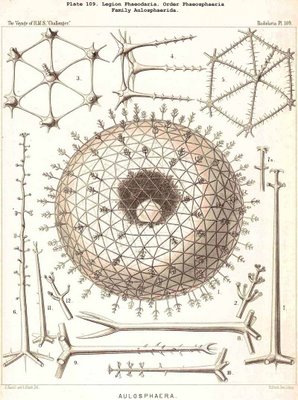
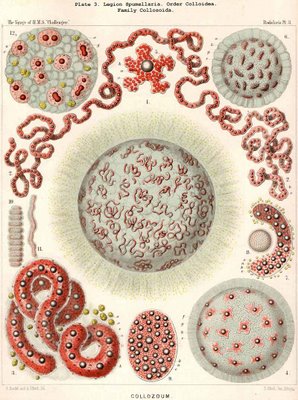 The above 4 images come from the renowned Ernst Haeckel
The above 4 images come from the renowned Ernst Haeckeland I only just now realise that all the plates he prepared for
the Challenger publication are in fact available from Kurt Stüber's
website [I, II, III, IV] (about my favourite place on the web)
[If you haven't encountered the amazing 'martian' plankton
images from Haeckel before, absolutely definitely see:
'Radiolarien' and 'Kunstformen der Natur']
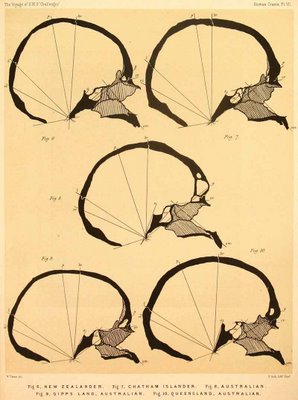
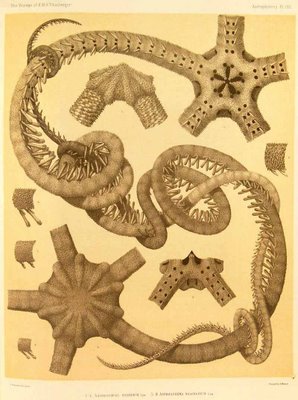

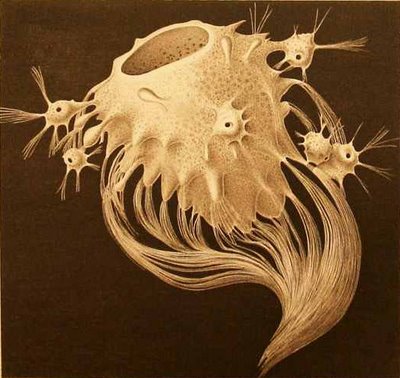

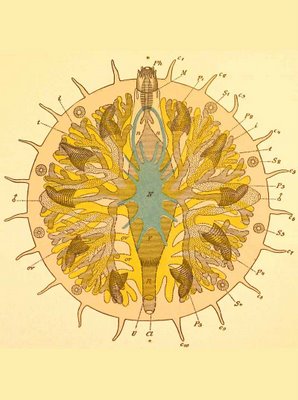

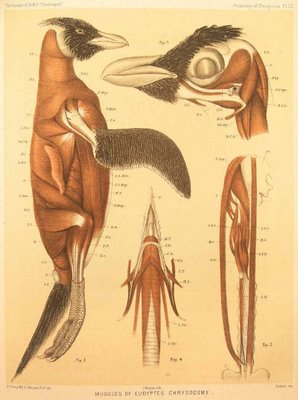
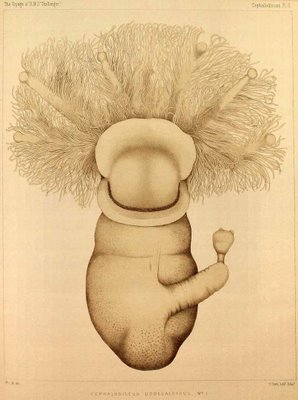
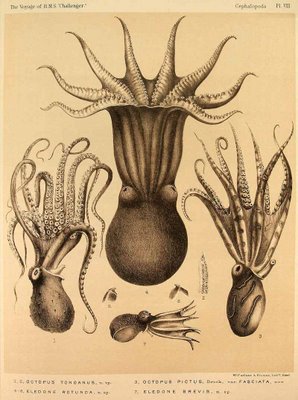
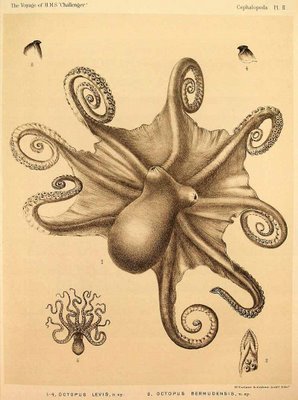
HMS Challenger was a steam assisted wooden corvette that sailed nearly 70,000 miles around the world between 1872 and 1876, engaged in marine exploration and specimen collection. The former naval ship had been refitted to house purpose-built laboratories, a dredging platform and extra cabins for the 250 crew and scientists.
The voyage was a benchmark for oceanographic science, with extensive physical, chemical, biological and meteorological measurements and sampling undertaken methodically for the first time in all the oceans of the world, save the Arctic. Among other thing they were able to establish that living organisms could survive at great depths in pitch black conditions (going against the beliefs at the time) and that some sediment on the ocean floor originated from comets.
In addition to the vast numbers of newly discovered marine creatures collected, the ship spent considerable time in ports, allowing for further exhaustive fauna sampling and studying of native cultures and their physiology (see skulls above). Much of the 2 volume summary from the eventual 50 volumes of Challenger scientific papers published by 1895 described the eclectic tribes and their customs..
"King Thackery of the Fiji Islands of the Pacific was converted to Christianity, but had earlier cut out a victim's tongue, and then proceeded to eat it in his victim's presence, before eating the rest of him. Most of the other people encountered were less disturbing."
- The massive publication arising from the expedition is called: 'Report on the scientific results of the voyage of H.M.S. Challenger during the years 1873-76 under the command of Captain George S. Nares and the late Captain Frank Tourle Thomson. Prepared under the superintendence of the late Sir C. Wyville Thomson and now of John Murray.' The images above come from the 1895 summary which is available on a large illustrated index page at 18thcentury.org.
- The full 50 volumes (I think) is divided taxonomically and available from this page.
- There is a lot of information online and but I thought this single page outline at Fathom was about the best read.
- University of California, San Diego have an extensive website exhibition.





you are a hero !
ReplyDeleteGreat quotation. "Less disturbing" indeed! What do you mean by "purpose-built laboratories"? Ad-hoc laboratories?
ReplyDeletetheodosius, there are images of some of the laboratories here. I think 'purpose-built' is about the same as ad hoc.
ReplyDeleteThey were built and equipped for the specificity of the tasks that were to be performed in them and were not just knocked up for any old reason.
Thanks for the link to the labs, I see what you mean now. I guess I had something temporary in mind, but I see they were permanent labs designed to accommodate the type of experiments to be conducted in them.
ReplyDelete